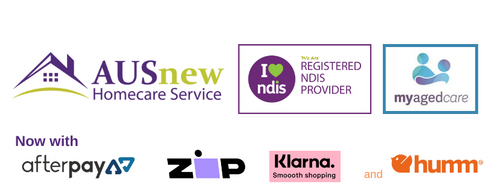I vividly remember walking into my classroom on my first day of Year 1 and seeing Mrs Sinclair smiling at me. I smiled at her as she signed "Good morning" to me. I signed back to her.
There was also Miss Smith, who was employed as a teacher aide to interpret for me, despite having learnt how to sign the year before.
My classmates could also sign, which allowed me to be able to establish friendships with them and communicate with them.
I am one of the 97 per cent of deaf babies born to hearing parents; however, that percentage seems to become smaller when hearing parents choose to learn sign language to be able to communicate with their deaf child.
My mum chose to learn sign language so she could give me an accessible language. She saw it as a challenge to discover another language; another way to communicate.
There was nothing to fix — just lots to learn, according to Mum.
I was living in Springsure, a quaint town in Central Queensland with a population of around 900. It seemed ordinary to me that everyone there could sign.
Only several years later did I learn that this was made possible through tireless advocacy by my mum and the school leadership team at Springsure State School.
The community rallied together so I could be included
When Mum enrolled me at the school, she contacted the Queensland Department of Education to request for a teacher aide to interpret for me, and for resources to be provided to enhance my educational experience.
However, the Department of Education said they could only commit to funding four hours of assistance per week.
This barrier left Mum and the school disheartened, as it meant I would not be able to fully access the curriculum thus facing significant learning challenges.
They found it difficult and exhausting navigating through the Department of Education's bureaucracies.
It was a long and tiring fight for my access and inclusion.
Somehow, the town found out and rallied together to raise funds, which would then cover the salary of a full-time teacher aide and purchase resources to enhance my learning.
The school was able to buy resources such as videos of popular children's storybooks translated into Auslan; bilingual books with both Signed English and written English; and copies of the yellow Signed English dictionary.
The funds also paid for teachers to travel to Rockhampton to learn Signed English during the holidays.
With true inclusion, you're not even aware of any barriers
Although Signed English was a visual communication method used with deaf students in schools throughout Queensland, my classroom teachers at Springsure adopted a bilingual approach.
This approach allowed me to access all learning materials and develop literacy and numeracy skills alongside my classmates, fostering an inclusive environment.
An inclusive environment should facilitate learning for all children, so that no one is left out.
The adoption of such an environment was uncommon during the 1990s.
While I was not yet familiar with the cultural norms of the Deaf community at the time, I was given opportunities to access the curriculum in both languages in an environment where my deafness and my language were accepted by everyone else.
The community in Springsure also participated in Deafness Awareness Week (now known as National Week of Deaf People). Local businesses — such as the newsagent, bank, video store and supermarket — created posters with relevant signs.
Outside of school, I was also seen as an equal and I could engage in conversations with almost everyone. At the age of six, I remained blissfully unaware of the concept of communication barriers.
My parents made the decision to leave Springsure in late 1992 to seek further educational opportunities for me.
We moved to Bundaberg, where my parents wanted me to go to Norville State School as it had already committed to a similar bilingual approach with other deaf students. I also needed to be able to access other deaf people of similar age and deaf role models so I could develop my deaf identity.
Luckily for me, the transition from Springsure to Norville was an easy one because nearly everyone at the school could sign too.
Although, it was also where I learnt about communication barriers the hard way, as Bundaberg was a much bigger town and not everyone in town knew how to sign.
Inclusion improves the world for everyone, not just people with disability
Bilingual classrooms ensure deaf students are included because they have opportunities to access resources in both languages.
A bilingual classroom benefits not only deaf students but also those who are hearing.
Research has shown that children who are exposed to bilingual learning benefit from robust use of the brain; enhanced social and interpersonal skills; and stronger skills in language analysis, reading and reasoning.
As I was the only deaf person living in Springsure, the town's willingness to embrace sign language created a positive experience for me.
The world would be a better place for deaf and hard of hearing people if more communities embraced our national sign language like Springsure.
Barriers are eliminated when a wider community works together to ensure deaf and hard of hearing people are included.
It benefits not only deaf and hard of hearing people, but everyone else too.
Sherrie Beaver is a Deaf queer person living in Naarm (Melbourne) on unceded Wurundjeri land. She works in the fundraising sector and also dabbles in academia, content creation and advocacy in her spare time.
The ABC is partnering with International Day of People with Disability to recognise the contributions and achievements of the 4.4 million Australians with disability.
Source: ABC
